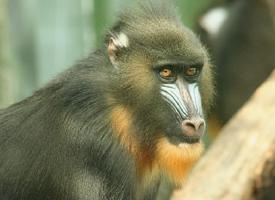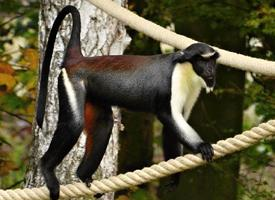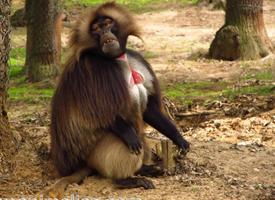
Greutăți și măsuri
| Lungime | de la 100 la 120 cm |
|---|---|
| Greutate | de la 10 la 25 kg |
| Lungimea cozii | de la 45 la 70 cm |
Date biologice
| Durata gestației | de la 175 la 180 d |
|---|---|
| Numărul de pui | 1 |
Descrierea animalului
The Yellow baboon (Papio cynocephalus) is a fascinating primate species that belongs to the family Cercopithecidae. Native to a wide range of environments across eastern Africa, from Kenya and Tanzania to Zimbabwe and Botswana, this adaptable animal has garnered interest for its complex behaviors and social structures.Physically, the Yellow baboon is a robust creature with a distinctive appearance. Adults typically exhibit a coat of yellow-brown fur, which serves as effective camouflage within their dry, wooded habitats. Their faces are hairless and black, providing a striking contrast to their lighter fur. Males are significantly larger than females, with some males weighing up to 50 kilograms (about 110 pounds), whereas females are generally smaller, weighing around 20 kilograms (about 44 pounds). Both sexes have long, powerful limbs and tails, with the tail often appearing curled at the end. This feature aids in balance and communication among individuals.
One of the most remarkable aspects of Yellow baboons is their highly organized social structure. They live in troops that can number up to 150 individuals, although groups of 20 to 50 are more common. These troops are matriarchal, with females remaining in their natal groups for life and males migrating between groups. Hierarchies are well-established within these communities, influencing access to resources, mating opportunities, and social interactions. Communication within the troop is complex, involving a variety of vocalizations, facial expressions, and body postures.
Yellow baboons are omnivorous, with a diet that includes fruits, seeds, grasses, and occasionally small vertebrates or invertebrates. Their ability to exploit a wide range of food sources has been key to their survival in diverse environments. They are also known for their problem-solving abilities and have been observed using tools in captivity.
Reproduction in Yellow baboons does not follow a strict seasonal pattern, although births may peak during certain times of the year, depending on the local climate and food availability. Females give birth to a single offspring after a gestation period of around six months. Infant baboons are highly dependent on their mothers for the first few months of life, receiving not only nourishment but also protection and social education.
Despite their adaptability, Yellow baboons face threats from habitat loss, hunting, and human-wildlife conflict. As humans expand agricultural and urban areas, the available habitat for these primates diminishes, leading to increased competition for resources. Conservation efforts are focused on habitat preservation and mitigating conflicts to ensure the survival of this intriguing species.
In conclusion, the Yellow baboon (Papio cynocephalus) is a remarkable animal, notable for its adaptability, complex social structures, and cognitive abilities. As with many wildlife species, understanding and preserving their natural habitats is crucial for their continued survival in the wild.
Animale similare
Fotografii noi cu animale
Top 10 animale
- Dolphin gull (Leucophaeus scoresbii)
- Diana monkey (Cercopithecus diana)
- Moustached guenon (Cercopithecus cephus)
- Galápagos tortoise (Geochelone nigra complex)
- Russian tortoise (Testudo horsfieldii)
- Stone loach (Barbatula barbatula)
- Japanese macaque (Macaca fuscata)
- Greek tortoise (Testudo graeca)
- Common flying dragon (Draco volans)
- Vendace (Coregonus albula)


